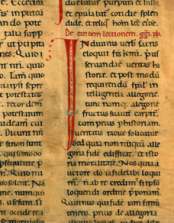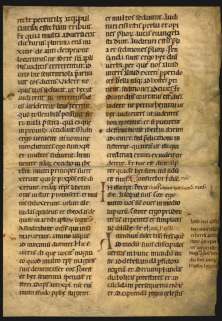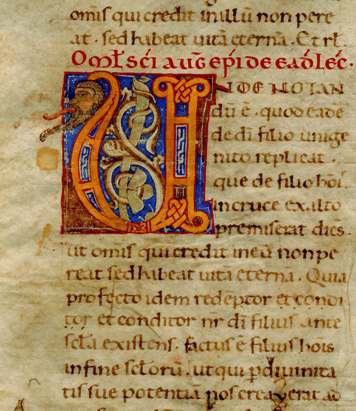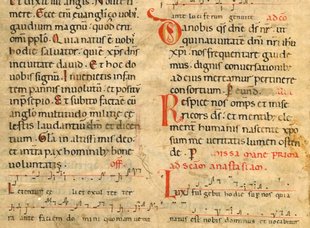Learn more about
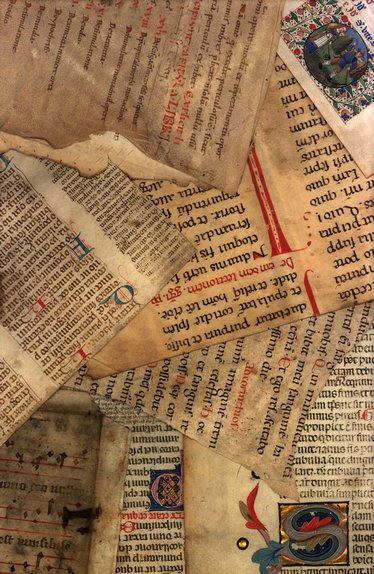
I frammenti di pergamena mi parlano.
Quella superficie glabra, raggrinzita, cosparsa di pori otturati da polvere e sudore.
I frammenti traspirano la storia che li ha attraversati, basta ascoltarli.
Ancor prima di leggerli mi raccontano di chi li ha vergati, dell'attenzione posta nell'ordinare le parole e le abbreviazioni perchè la pergamena costa cara.
Mi raccontano di quando sono stati riposti in un cassone, laggiù in cantina, e l'umidità li ha gonfiati.
Ma qualcuno li trova e li riutilizza ancora per racchiudere e confezionare altri fogli E la pergamena si contrare di nuovo, si piega, si accartoccia su se stessa.
E continua a parlarmi di sé, attraverso le parole appuntate sui margini, nei numeri scritti velocemente a matita in un angolo.
E allo stesso modo di uno scavo archeologico quando scendendo strato dopo strato ritrovo il terreno vergine così anche su questo frammento leggo e comprendo i reimpieghi, da quando fu tagliato e vergato la prima volta sino all'uso più recente.
Quella superficie glabra, raggrinzita, cosparsa di pori otturati da polvere e sudore.
I frammenti traspirano la storia che li ha attraversati, basta ascoltarli.
Ancor prima di leggerli mi raccontano di chi li ha vergati, dell'attenzione posta nell'ordinare le parole e le abbreviazioni perchè la pergamena costa cara.
Mi raccontano di quando sono stati riposti in un cassone, laggiù in cantina, e l'umidità li ha gonfiati.
Ma qualcuno li trova e li riutilizza ancora per racchiudere e confezionare altri fogli E la pergamena si contrare di nuovo, si piega, si accartoccia su se stessa.
E continua a parlarmi di sé, attraverso le parole appuntate sui margini, nei numeri scritti velocemente a matita in un angolo.
E allo stesso modo di uno scavo archeologico quando scendendo strato dopo strato ritrovo il terreno vergine così anche su questo frammento leggo e comprendo i reimpieghi, da quando fu tagliato e vergato la prima volta sino all'uso più recente.
Manuscript leaf on vellum. Psalter, England, XIII cent.
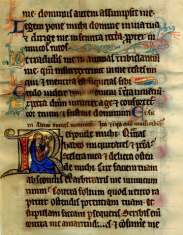
Manuscript leaf on vellum. Holy Bible. France, XIII cent.
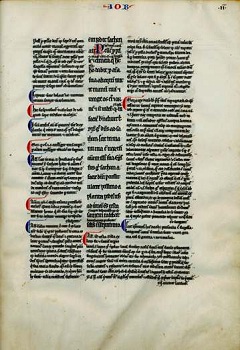
Manuscript leaf on vellum. Decretum Gratiani, France, XIV cent.
Detail.

Furthermore, the advent of printing in the next century revolutionized the production of books, popular books and reading the new content easier thanks to the regularity of the characters, gradually marginalizing the book manuscript. Following this book authentic revolution, the monasteries - the ancient treasures of knowledge - began to sell off or transfer manuscripts when they could get the printed editions of the same texts.
In the age of humanism and the Renaissance, sheets and double sheets of parchment codes to be destroyed were reused from the era, such as binders, covers and sheets on guard, or hidden in the books as reinforcement. And so, in a manner not dissimilar to the fate of archaeological monuments reused as building quarries, also considered obsolete manuscripts were used as a material recovery.
In later centuries the taste for new and contempt for the middle age and all that was heard as "gothic", including medieval manuscripts, led to a 'further
Manuscript leaf on vellum. Germany, XII century.
dissipation of the manuscripts, antiquarian and collectible until
the interest start of the eighteenth century did not give the
actual destruction of raids in the codes, which were cropped
miniatures and decorated initials: with a certain cruel irony, the
Age of Enlightenment ended in this way to plunder the treasures of
the Middle Ages with the same brutality that the intellectuals of
the time attributed to the "barbarians" who plundered the remains
of the ancient world.Science in the Middle Ages
The medieval world has provided the following centuries some of the prerequisites for the birth of modern science has not only provided a large body of translations of Greek and Arabic texts (Aristotle, Plato, Avicenna), but also invented an institution, the university , which formed a specific space for the West philosophy and rational, and created a class of intellectuals, philosophers and theologians who, from within the universities themselves, have made free to live the faith with critical analysis.
Manuscript leaf on vellum. «Aurora», England, XIII cent.
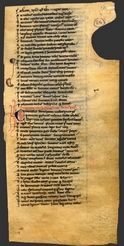
"We are like dwarfs on the shoulders of giants,
so that we can see more than they and things
greater distance, not by virtue of any sharpness of sight on our part,
or any phisical distinction, but because we are carried high
and raised up by theyr giant size"
Manuscript leaf on vellum. Alcuino of York: «Commentaria....», XI
cent.
This song became famous and commonly used, refers to the sum of the constitutive theory of science in the Middle Ages. The programs of study, in fact, were based on reading auctoritates or texts by authors of various antiquities which formed the basis of the individual disciplines, which were added the most acclaimed modern commentaries. The list of textbooks university was then supplemented by glosses and summae of many professors. The basic texts of law were in Corpus Juris, Corpus Juris Civilis and Canonicis. In Bologna, these texts were commented on with the help of the glosses of doctors in Bologna, synthesized by Accursio Francis (1182- 1260) in the Ordinary Gloss.
For the doctors were referred to Hippocrates, Galen, Constantinus Africanus, the Canon of Avicenna and Averroes Colliget. The study of theology was based on two key texts: the Bible, the works of the Fathers of the Church and the book of the Sentences of Peter Lombard.
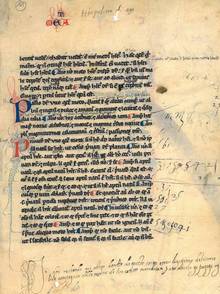
Manuscript leaf on vellum. Aristotle: Metaphisic. End of XIII
century. Detail.
Manuscript leaf on vellum. Missal. North Italy, XIII century.
Detail.
The theologians also used a purely philosophical texts, such as
those of Aristotle and Arab philosophers, Aristotelian texts,
however, had greater use at the Faculty of Arts (later merged with
that of Medicine), who presided at the preliminary training
university of the scholar, equipping the bases not only grammar and
rhetoric, but also logical and philosophical, real prerequisites
for access to faculty and more complex studies.
